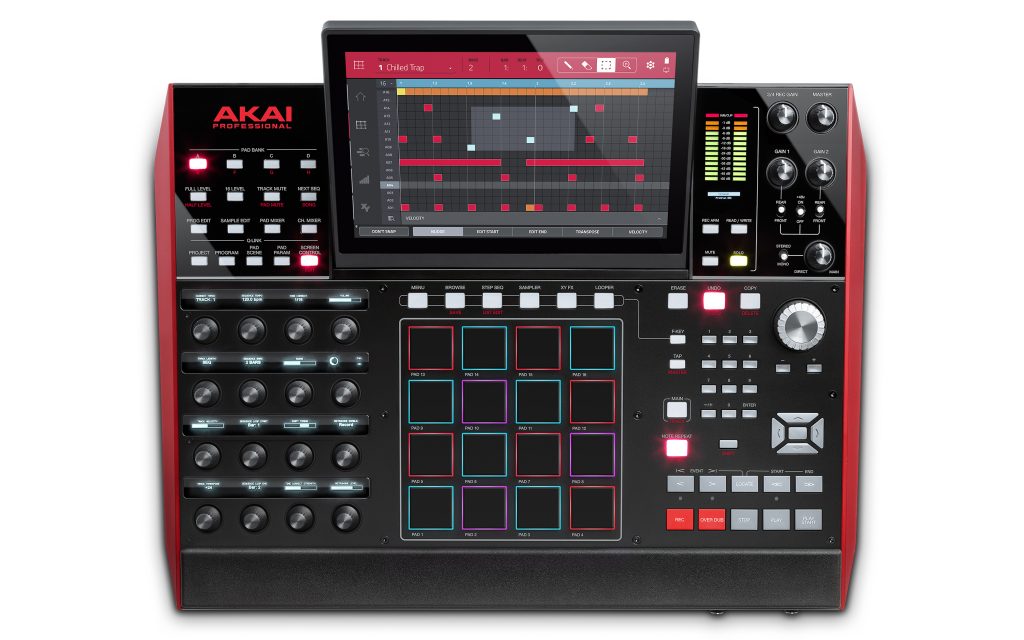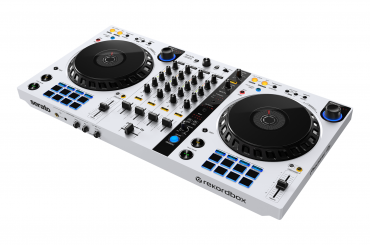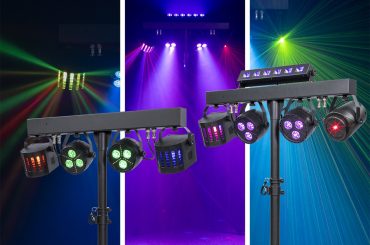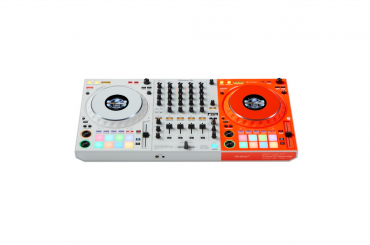“Welcome to the new era of MPC” reads the text on the software-download instructions that come with the device. “The next generation of standalone MPC” is emblazoned on the packaging. It’s clear that Akai (an inMusic brand) has big ambitions, and a lot riding on this product. And after some time spent working with it, it’s also clear that they’ve packed a lot of features into the MPC X. And that makes sense, considering its hefty price point ($2,199).
Weighing in at 12.5 pounds, the MPC X is a sturdy and, at first glance, a slightly intimidating piece of kit. There are close to 100 separate buttons and knobs laid out in front of you. And then there’s the 10-inch touchscreen that works as the control interface for the MPC X. Turn on the MPC X, click the screen, and you can quickly get lost navigating through menus, settings, options and folders. There’s a lot to get your head around in order to truly unlock all the capabilities of the MPC X.
The MPC X touts itself as being a standalone device. But the truth is that “standalone” is only one way to interface with the MPC X. Yes, you can create projects using simply the MPC X itself. But there’s also the MPC software that Akai offers as a download to any registered owner. You can launch the MPC software as a standalone app on your computer and use the MPC X as a controller and interface. You can also use the MPC software as a plug-in in your DAW. Plus, you can use the MPC X as a hub for your other devices, with eight built-in CV ports designed to be used with modular hardware synths.
So that means there’s really no uniform way that artists can use the MPC. If you’re a computer person, you can integrate it into your studio set-up. If you’d like to just make beats and tracks on the MPC X itself, that’s possible, too.
If you’re familiar with Akai MPCs of the past and recent present, then the MPC X will feel like a nice evolution. Those trademark quality pads are here – only now they’ve got LED lights accompanying them, helping you visualize velocity. There’s also the pad bank selectors, and the same transport controls – nods to the classic MPC design. But now, there’s also the big touchscreen, and 16 Q-link knobs. If you’re new to MPCs entirely, then there’s a pretty steep learning curve that comes with getting your head around this unit.

The best way to dig into the MPC X is to focus on its core features: those lovely pads, and your ability to construct tracks with them. The MPC X comes ready to go, too. The first things you see on the touchscreen when you turn the unit on are a number of ready-to-go projects, covering multiple musical genres: deep house, chilled trap, hip-hop, old-school, and so on. Pick one, and you’ll get a fully-loaded song-starter type of track, with multiple tracks of programmed notes.
From there, you can start padding away. Hitting the pads, you can get a feel for how sensitive and expressive they are. But what is it you’re hearing and playing? The navigation with the MPC X can be a little bit tricky. The touch screen relies heavily on visual icons for navigating, and some of the things you think would be easily accessible – i.e, a visual display of the pads with the sample assigned to them, is not immediately present.
I’d say that navigation is the biggest challenge of the MPC X. It takes a good few days of playing around with the machine to really get into a regular flow where switching between the right screens becomes second nature. And while you are given a number of ways to do the same thing – almost any of the buttons on the touch screen can be pressed using on-board cursor buttons and the selector dial – that method sometimes can be challenging as well. I found myself pressing the touch screen when using the dial was the only way to access the menu I was looking for.
But once you get over the early bumps and come to understand and anticipate the MPC X’s functions, you’ll appreciate that this is a very robust device, with lots of potential to please all kinds of artists. Both hip-hop aficionados and dance-music producers – the two core constituents who originally embraced the early MPCs – will especially be happy with what the MPC X has to offer. Additionally, singer/songwriters and live musicians will appreciate the MPC X’s accommodations for them. The back panel comes with two XLR and ¼-inch TRS inputs for recording microphones, including ones needing phantom power. Plus, there are two more ¼-inch line inputs on the front, and two more on the back. And vinyl junkies who want to sample beats will appreciate the two RCA phono inputs with a RIAA preamp.
Akai wants you to be able to get started right away, so they’ve included a wealth of content that comes pre-loaded onto the MPC X. Complementing the 12 demo projects you can load upon startup, there are tons of kits, instruments, clips and samples, all of very high quality. You can download genre-specific expansion packs to your computer as well. And Akai offers for-purchase Expansions that will keep new content coming your way. You can also use your own samples to build your own kits.
The MPC software is also fairly notable. When loaded on your desktop – it runs as a standalone application, or as a plug-in in your favorite DAW – you’ve got essentially a mirror of the software that runs on the MPC X. If you’ve spent any time programming tracks with the Maschine software, this will look quite familiar to you. It’s not the easiest program to use, but it’s a good way to come at your MPC projects from another angle.
The early MPCs have developed quite a cult following amongst music producers, in part because of their technical limitations. Their lack of memory, reliance on disks, short sample times, and limited effects – all these required artists to get creative with the limited options available. But this new MPC X generation – with its 16GB of onboard storage (you can also install your own SATA hard drive), easy access to USB drives, instant computer connectivity, changes that equation somewhat. And while the MPC X does tout itself as a standalone, the 10-inch touchscreen, which for all intents and purposes is essentially an iPad, basically functions as a smaller computer and on-board DAW. How does an Akai MPC define itself in a world virtually free of memory constraints and limited content?
If you’re a producer who loves using a computer, then perhaps the MPC X might be priced a bit too steep for some to consider as an addition to the studio. But if you’re looking for a workhorse standalone machine that is fun to play, sounds great, and frees you from a laptop, then it’s definitely worth some serious consideration. Either way, it’s great to see Akai pushing forward with an iconic product line that has contributed so much to the legacy of music production.








